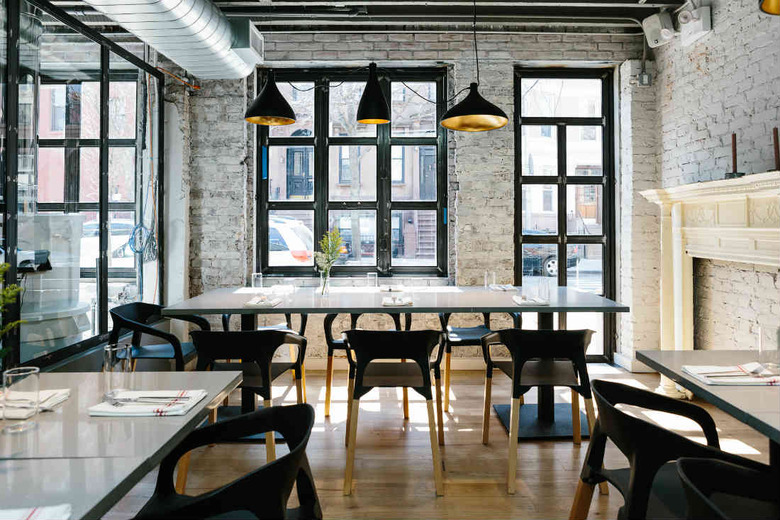If You Build It, They Will Come For Brunch: An Interview With Blueberry Builders' Winter D'Angelillo
East One Coffee Roasters is a wonderfully hybrid eatery that opened on a prominent corner of Brooklyn's Carroll Gardens earlier this spring. The front space, perfect for latte sippers and wine glass clinkers, blends seamlessly with the rear dining room despite the latter being far from traditional and boasting a number of conversation-worthy characteristics.
The woman behind the delightful and dynamic space is Winter D'Angelillo, AIA, a Senior Project Architect at Blueberry Builders, a New York City-based design and build firm dedicated to revolutionizing the construction industry with creative, personalized building solutions. We sat down with her to find out a little about what it's like to design a restaurant for the first time, work as a woman in a male-dominated field, and see people enjoying the fruits of your labor.
The Daily Meal: What was your favorite aspect of designing your first restaurant? Winter D'Angelillo: The best part was when the final vision started taking shape. Like a play, the third act of construction was the most exciting and revealing; paint finishes started to align with furniture, and lighting, and plates, and glasses—the whole project came to life. The majority of a construction project is behind-the-scenes, so when it finally came together and looked cool, it was like the first signs of spring. It was pretty exciting to create a space that people want to hang out in, one that gives back to the community and to the owner. I feel East One accomplishes this ten times over.
What are the major advantages and disadvantages you encounter when working as a woman in such a male-dominated field?
You know, it's such a double-edged sword to highlight being a woman in any male-dominated industry. No woman wants to be valued or considered differently than her peers because of her gender. This distinction should disappear, and people are judged solely on what and how they contribute. That said there is, in my experience, a lot of bullshit to deal with being a woman in both construction and in architecture. In construction, anyone young is presumed not to know anything, and women (or girls as we are often referred) can't possibly know how to build. To build is equated with masculinity and strength. In old-timer professions, like architecture and construction, where experience and reputation are everything (esp. in New York), how could a girl possibly know better than a seasoned plumber where the best place for drainage is? I guess I gave them a run for their money.
What inspired you to showcase the roaster of East One within the space the way you did?
The coffee roaster is special. It looks cool, and you don't usually see these things around. I wanted it to be celebrated, and put on display, in the center of the room, under the skylight, and right against the windows. It's intriguing.
What is your favorite feature that you designed for East One's interior?
Tough question – In the front cafe, I dig the bar. I had to fight tooth and nail to get this bar built – it is oversized by typical bar standards to incorporate many times of day; early morning coffee rush, espresso making, pastry sales, and an area for cocktails and stool perching. When we were under construction, there was a lot of anxiety about it being too big, but I held fast to its generosity and it paid off. When you see it from the street, its impressiveness alone brings people in. And when hanging out there for a cup of coffee, you feel that the daily life of the shop and its inevitable operations has an equally important role to the customer areas because it's such a fixture in the room. Usually the back-of-house is hidden in food establishments, but I think experiencing this is in an open way is much cooler. I also think a big bar gives the baristas a stage, and makes them feel like rockstars.
In the back dining area, I love the open kitchen and open roastery—they are both enclosed by steel and glass, so when you eat dinner you are basically smack in the middle of the these two production areas. It again gives you a feeling of community and inclusiveness in the "goings on" and looks quite industrial, but the lighting is soft and romantic, and the paint colors are gentle; all meant to make a lived-in, comfortable dining experience. It's a different sensory experience from a typical restaurant, and this inclusiveness was one way to keep the coffee brand present in the back restaurant space where it's not strictly about coffee.
